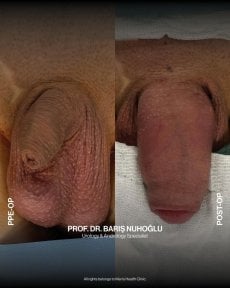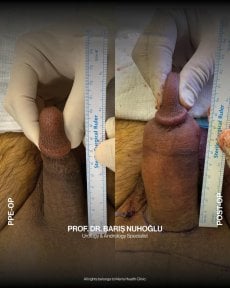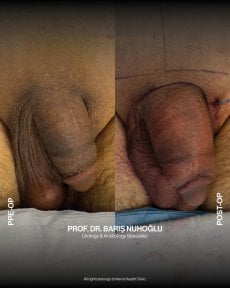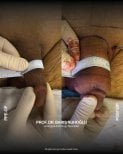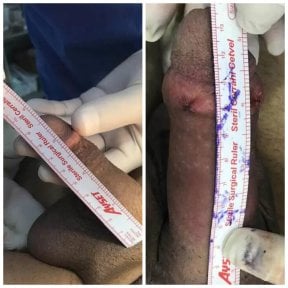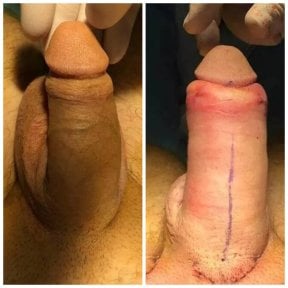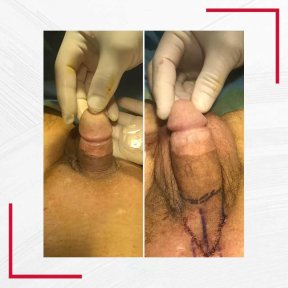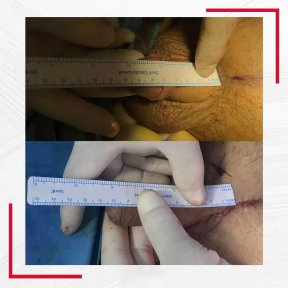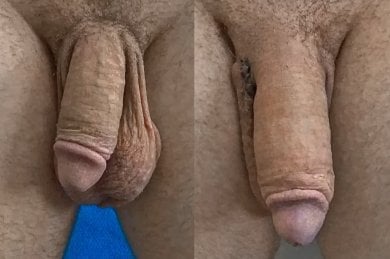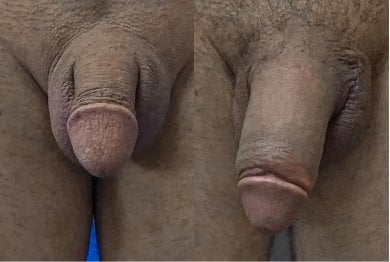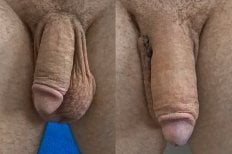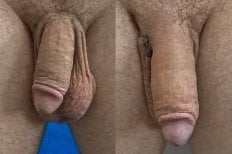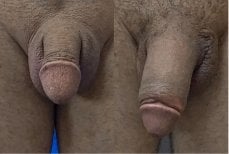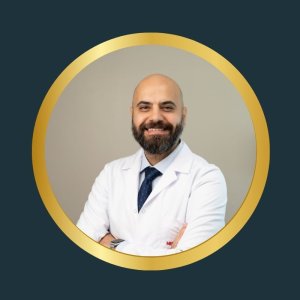Is penis enlargement in Turkey safe?
When performed by qualified medical professionals in accredited facilities such as Uroaesthetic (5.0/5, Istanbul), Men's Health Clinics (4.9/5, Istanbul), and Dr. MED (4.9/5, Istanbul), the procedure is safe. Turkey has established itself as a medical tourism destination with 425 specialized clinics offering penis enlargement procedures and experienced surgeons such as Dr. Bugra Cetin at Uroaesthetic and Prof Dr. Baris Nuhoglu at Dr. MED who utilize modern techniques and technology.
However, safety depends on proper patient selection, surgeon expertise, and adherence to medical protocols. A patient from the UK who received treatment at Dr. MED Clinic shared: "Everything was super, professional doctors and the staff in general are very friendly and caring. The surgery went well and it was worth it!" It's essential to research your chosen clinic thoroughly and ensure your surgeon is board-certified before proceeding.
What are the risks associated with penis enlargement surgery?
Like all surgical procedures, this treatment carries potential risks that patients should carefully consider. Clinical studies show infection occurs in 3.3% of cases, hematomas develop in up to 25% of patients, device removal is required in 3–7% of cases, and glans necrosis affects 0.7% of patients. More serious but rare risks include nerve damage and unsatisfactory results requiring revision surgery.
Your surgeon will discuss these risks in detail during consultation and explain how they minimize complications through proper technique and post-operative care.
Emergency Symptoms - Seek Immediate Medical Attention
If you experience any of these symptoms, seek immediate medical attention.
- Severe or worsening pain not relieved by medication
- Persistent fever over 38°C (100.4°F)
- Excessive bleeding or swelling
- Loss of sensation or movement
- Difficulty urinating
- Signs of infection (pus, redness, warmth)
Is the procedure painful?
Most patients experience minimal discomfort during the surgery itself, as procedures are performed under general anesthesia and typically take 1–2 hours. Post-operative pain is typically manageable with prescribed pain medications. Some patients report mild to moderate discomfort for the first few days following surgery, which gradually subsides. Your medical team will provide comprehensive pain management instructions to ensure your comfort throughout recovery.
A patient from Germany treated at Men's Health Clinics reported: "Very good service! Everything was organised at a very good level, from the transfer to the hotel, the appointment with the doctor, the interpreter and the procedure itself!"
Does penis enlargement surgery work effectively?
According to systematic reviews, surgery increases length by 1–3 cm and girth by 2.5 cm on average, with patient satisfaction rates reaching 65%. However, outcomes vary significantly between individuals, and it's important to have realistic expectations.
Results depend on factors including your anatomy, the specific technique used, and your healing response. The body may reabsorb 30% of injected fat within the first 2 months in fat transfer procedures. During consultation, your surgeon will discuss what results are realistically achievable in your specific case based on thorough evaluation.
How long does the procedure take?
Surgery duration typically ranges from 1 to 2 hours under general anesthesia, depending on the specific technique employed and the complexity of your case. Simpler procedures may be completed more quickly, while comprehensive treatments requiring multiple techniques may take longer. Your surgeon will provide a more accurate time estimate during your pre-operative consultation based on your treatment plan.
How long does recovery take after the surgery?
Recovery requires 30 days of no intense physical activity and 60 days of no sexual activity, with most patients returning to work within 2–3 days for desk jobs. Most individuals can return to light activities within one week, while complete healing typically takes 4–6 weeks.
During recovery, you'll need to follow specific post-operative instructions including avoiding strenuous activities, following wound care protocols, and attending follow-up appointments. Your surgeon will provide a detailed recovery timeline tailored to your specific procedure and healing progress.
What are the potential side effects of the treatment?
Studies show 4.3% of patients experience complications including subcutaneous bleeding, nodules, and infection, while swelling occurs in 40–50% of patients typically resolving within 2 weeks. Most patients experience only minor, temporary side effects such as bruising and mild discomfort in the treatment area.
Some patients may experience temporary changes in sensation, which usually improve over time. Serious complications are uncommon when the procedure is performed by experienced surgeons in proper medical facilities. Your doctor will monitor your healing progress and address any concerns promptly.
What are the benefits of choosing this procedure?
The primary benefit is potential improvement in size and proportions, which may enhance self-confidence and body image for some patients. Individuals report improved psychological well-being and reduced anxiety related to body image concerns.
Turkey's reputation for excellence is reflected in patient experiences. A patient from the UK who received treatment at Lokman Hekim Istanbul Hospital shared: "I am very pleased with Bookimed. They took care of any concerns I had and helped me find the right hospital for my treatment, which was within my budget." However, it's crucial to have realistic expectations and understand that results vary among individuals.
What should I expect during the consultation?
Your consultation will include a comprehensive medical evaluation and discussion of your goals and expectations. The surgeon will review your medical history, current medications, and any previous surgeries. They'll explain different surgical options, discuss realistic outcomes for your case, and review all potential risks and benefits.
This is an excellent opportunity to ask questions, view before-and-after photos, and ensure you feel comfortable with both the surgeon and the proposed treatment plan. Leading specialists such as Dr. Bugra Cetin at Uroaesthetic bring specialized expertise in male genital aesthetics. Take time to consider all information before making your final decision.
Understanding the Procedures
Penis enlargement surgery encompasses several different techniques, each designed to address specific concerns:
- Length enhancement typically involves suspensory ligament division, which can increase flaccid length by 1–3 cm on average.
- Girth enhancement procedures include fat transfer using liposuction-harvested fat from the patient's own body, or silicone implant placement.
- The fat transfer process involves gentle removal of fat from areas like the abdomen or thighs using a thin tube. This fat is cleaned in a special machine, then safely injected into the penis just under the skin. However, patients should understand that the body may naturally reabsorb some of this transferred fat over time.
Choosing the Right Clinic and Surgeon
Turkey's medical tourism success stems from its combination of qualified surgeons, modern facilities, and competitive pricing. When selecting a clinic, consider factors such as:
- Board certification and experience of the surgeon
- Clinic accreditation and safety standards
- Patient reviews and satisfaction rates
- Comprehensive consultation process
- Post-operative care and follow-up services
Experienced surgeons like Prof Dr. Baris Nuhoglu at Dr. MED provide comprehensive urological procedures with extensive experience in male enhancement surgery. Board-certified specialists including Hasan Sahin at Hisar Hospital Intercontinental ensure quality surgical outcomes.
Recovery and Aftercare
Successful recovery requires careful adherence to post-operative instructions. Most patients can return to desk work within 2–3 days, but physical restrictions are important for optimal healing. The recovery timeline includes:
- First week: Rest and wound care, avoiding strenuous activities.
- Weeks 2–4: Gradual return to normal activities, continued activity restrictions.
- Weeks 4–8: Progressive increase in physical activity as healing progresses.
- 8+ weeks: Full recovery and return to all normal activities.
Regular follow-up appointments allow your surgeon to monitor healing progress and address any concerns promptly. Most patients find the recovery process manageable when following their surgeon's guidance.




